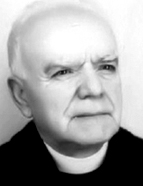

We can say that Domingos Maurício approached history through four distinct yet often interconnected rhythms. The first will emerge from his work with the archives in the cities where his ecclesiastical training took him, notably Rome and Florence, taking advantage of the renewed interest in and organization of Church and other archival collections. Indeed, it was within the Vatican Secret Archives, the Vatican Library, and the Medicea-Laurenziana Library in Florence that he gathered material for his most pioneering and significant works. We highlight his research on King Duarte and the expedition to Tangier, on Nuno Álvares Pereira, and on Prince Fernando: through cross-referencing known documents with those he discovered, and contextualising them within multiple levels of "global" history (at the level of Portugal, the Iberian Peninsula, Europe, the papacy, and Islam), he created works that have become classics in Portuguese historiography.
The second aspect is the necessity or timeliness of his research. Thus, the passing of Cardinal Franz Ehrle, a distinguished German Jesuit, professor at the Gregorian University, and long-time custodian of the Church archives is highlighted; similarly, he noted the work of "Lusophile historian" Fr. Jorge Schurhammer within the context of his passing (1972). In this context, a notable example is the research commissioned by the Sacred Congregation for the Causes of Saints to clarify the identities of the forty Jesuits — Inácio de Azevedo and his companions — who died for their faith at the hands of French Calvinist pirates near the Canary Islands in 1570. Through Domingos Maurício’s research, it was possible to establish the historical identities of the individuals involved and the details of the episode, enabling their beatification: they are the so-called "40 Martyrs of Brazil." Additionally, on the occasion of a centenary or celebration, we find him working on figures such as Albertus Magnus, Robert Bellarmine, St Elizabeth, St Anthony, Descartes, Herculano. In the same plane are his works on Portugal's centenary celebrations, the Congress of the Portuguese World (1940), and the 5th Centenary of Prince Henry the Navigator (1960). On the occasion of the four hundredth anniversary celebrations of the University of Évora (in 1959), he produced his final study, which was published in 1977 in the journal Didaskália, intitled “A Universidade de Évora e a escravatura” [The University of Évora and slavery]. The third element, which is always present, is that of the history of the Society of Jesus and its members, in connection, for example, with Camões, Pombal or Brazil (of which we highlight the comprehensive study "Balanço cultural dos Jesuítas no Brasil (1549/1760)" [A cultural overview of the Jesuits in Brazil], ( Brotéria, 1955). Lastly, there is his historical work ignited by controversies.
This work is financed by national funds through FCT - Foundation for Science and Technology, I.P, in the scope of the projects UIDB/04311/2020 and UIDP/04311/2020.
